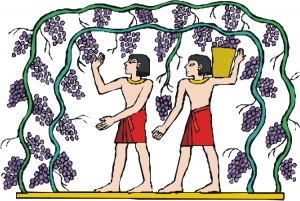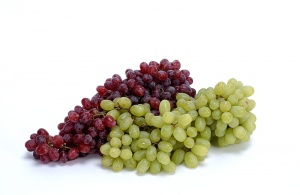Share This
My grape purchases tend to depend on price. But the other day as I was eating my $1.99 a pound seedless red grapes I began to wonder, are all grapes created equal? Does nutritional value change based on color? Should other factors be determining my purchases? So I decided it was time to investigate… And I found a “bunch” of interesting information that I wanted to share! First Some Great Grape Facts: — Grapes were first cultivated in Europe 6,000 years ago and are one of the oldest cultivated fruits.
— Grapes have a very strong connection to Mediterranean cultures, from their foods and libations, to their gods; Dionysus is the Greek Wine God. — Concord grapes are one of only three fruits native to North America. (The other two are cranberries and blueberries – I knew you’d be wondering!) — If left alone, one grapevine will spread 50 feet or more. — Viticulture is the science, production and study of grapes. — Grapes grow in clusters of 15 to 300. — Americans eat approximately eight pounds of grapes per capita each year. — Approximately 71% of world grape production is used for wine. (Surprise, surprise!) Thanks to Fresh California Grapes for some of the fun facts above! Health Hints:- Calorically grapes are pretty similar; one grape is about 3-4 calories. Where the primary differences lie are in the health benefits the different varieties offer.
- The skin and the seeds of grapes are where most of the nutrients live, especially nutrients called phytochemicals (phyto- means plant).
- Flavonoids, a type of phytochemical found only in foods of plant origin, give grapes their color. The darker the color, the higher the concentration of flavonoids.
- Flavonoids have antioxidant properties which allow them to neutralize chemicals, thereby minimizing the damaging effects some chemicals have on our cells and tissues.
- Red grapes contain three main flavonoids: resveratrol, catechins and quercetin. Green grapes only contain catechin.
- Catechins have an anti-bacterial effect and can defend against heart disease and cancer, but studies point to resveratrol and quercetin as being even more powerful. These two antioxidants also reduce the risk of heart disease and cancer and also may protect against Alzheimer’s. Additionally, they have been known to have anti-viral, anti-allergy and anti-inflammatory properties, which help to lower the risk of diseases such as arthritis.






Add a Comment